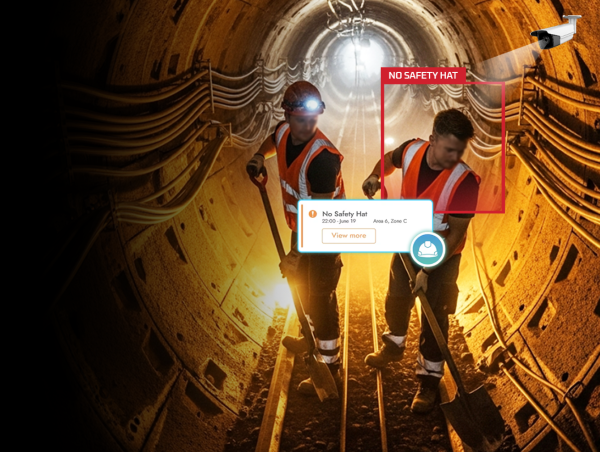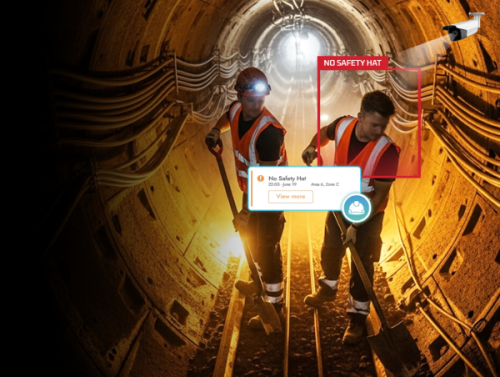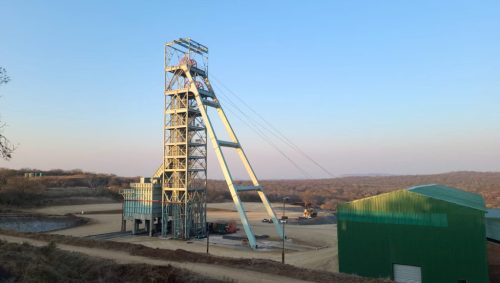In the heart of the rich Copper Belts of Africa, mining operations, although vital to economic growth, continue to be exposed to the same age-old safety risks that have plagued the industry for decades.
From collisions between machinery and personnel to blind spot incidents in underground shafts, the dangers remain high, even as technology advances.
But changes have started making waves in the form of Video Analytics.
With AI-powered video analytics, the humble CCTV camera is being upgraded to a real-time decision-making tool that watches, understands, and acts—often before disaster strikes.
From Traditional Watching to AI-Powered Warning
Conventional surveillance in mines has always been more archival than actionable. Recordings are stored, reviewed only when something goes wrong, and rarely result in proactive prevention.
With AI-powered video analytics, this model is turned on its head.
In 2024, in Zambia’s North-Western Province, a large-scale copper mine using AI-integrated CCTV reported a 70% increase in early safety interventions, especially in zones with high vehicle-foot traffic intersections.
At one site, an autonomous AI module detected a pedestrian entering a haul truck path, flagged as a red zone. Within seconds, the operator received a visual alert, halted the vehicle, and a collision was avoided. Before AI deployment, similar events had gone unnoticed at least three times a month.
Solving Africa’s Oldest Mining Hazards with New Eyes
Across the DRC and Zambia, long-standing mining risks continue to test EHS (Environment, Health, and Safety) teams. Among them, detection of worker fatigue on night shifts, unmonitored confined space tasks, hot work permits being bypassed and undetected equipment failure remain critical.
In 2023, a cobalt mine in Kolwezi integrated AI-powered confined space detection with video analytics. Previously, routine knock-and-response checks were used to confirm worker presence. However, after AI integration, the system flagged an unconscious worker due to inactivity and lack of movement.
Emergency responders intervened within 8 minutes, significantly faster than the previous average of 22 minutes.
In another case, a gold mine near Solwezi, Zambia, used predictive video analytics to monitor fatigue in its drill operators. With eye-blink tracking and posture monitoring, the system triggered rest breaks when signs of micro-sleep were detected. The site reported a 40% drop in incidents involving heavy equipment over 3 months.
Designed for Africa, Built for Scale
One of the greatest advantages of AI video analytics is that it doesn’t require replacing the wheel—it builds on existing infrastructure.
Most African mines already use CCTV systems. The innovation lies in how the 100+ AI modules integrate with those feeds to deliver intelligent alerts. These alerts can detect PPE non-compliance, unsafe proximity to machinery, unauthorized zone entry, and risky behavior like jumping across conveyors or skipping lockout procedures.
In a pilot project at a Zambian copper processing plant, AI video analytics detected an average of 125 unsafe proximity incidents per week, previously unnoticed by supervisors. After introducing dynamic safety zones and automated alerts, the number fell to under 20 per week within two months.
Moreover, cloud and hybrid deployment options allow operations in remote zones—like Kambove or Chingola—to function with intermittent internet or operate locally with edge processing.
As Gary Ng, CEO of viAct, rightly states:
“Video analytics is far more than a technological enhancement—it is a behavioral lens that reshapes how safety is perceived and practiced. It empowers mining leaders to trace risk in real time, understand its underlying patterns, and act decisively before incidents evolve into crises.”
Beyond Compliance: A Strategic Safety Evolution
In today’s mining world, safety has evolved further from being an ethical necessity to a business strategy.
As African mines are now under increasing scrutiny from ESG auditors, global buyers, and investment boards, video analytics is helping forward-thinking operators leap higher.
By shifting from paper logs and static reports to AI-powered dashboards, mining leaders can now benchmark safety scores across multiple sites at one platform, identify risk patterns for future trend evaluations, auto-generate incident trends and training recommendations, while leading to an improvement in time-to-response in emergencies by up to 80%.
In one instance, a copper site operating across two shafts in DRC used site-wide AI dashboards to detect a surge in incidents tied to third-party contractors during weekend shifts. This insight led to new onboarding protocols and accountability tracking, which in turn reduced incident rates by 32%.
Africa’s Mining Future Is Being Watched—Intelligently
The age-old risks of mining haven’t disappeared, but the way we deal with them has. Video analytics is not just helping mines meet safety goals—it’s enabling a smarter, data-driven culture of prevention.
For DRC and Zambia’s mining sector, the message is clear: to lead the future, we must see it differently—and with video analytics, we finally can.
Gary Ng, CEO and Co-Founder of viAct comes with a background of building engineering who turned into AIpreneur with inception of viAct in 2016. He has 10+ years of experience in implementing technological innovations in construction industry. Before viAct, he was the Managing Director of 3D fashiontech EFI Optitex. Also rewarded as the best regional senior executive in NASDAQ listed technology enterprise Stratasys. With his ultimate strength of analytical thinking & strategic decision making, Gary was also the advisory board member for SXSV in his early career. Gary believes in the concept of transferring knowledge from experienced to youngsters and is a renowned academic professional. Currently he is a visiting faculty professional at The Hong Kong Polytechnic University. Gray is also an active public speaker & preacher of AI driven sustainability in workplaces.





